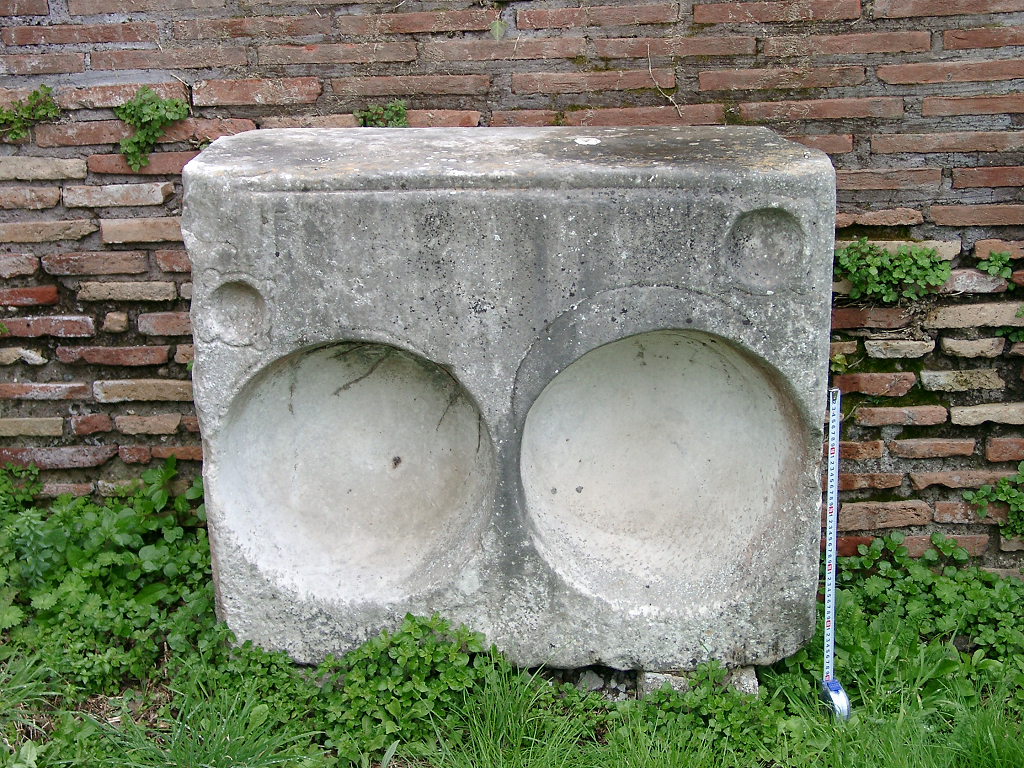The House of the Harbour Mosaic was built during the reign of Commodus (yellow opus latericium with red bonding courses). Alterations have been dated to the first half of the third century.
Along Via della Foce to the west and Via degli Horrea Epagathiana to the east are shops behind a porticus. The rows of shops are connected by a long, narrow corridor. Travertine staircases were accessible from the west porticus and the corridor. The rooms in the east part had cross-vaults.
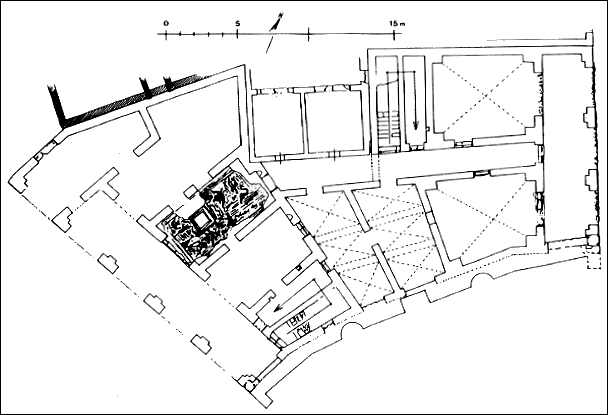
The rooms in the west part are all interconnected. In the back wall of two of these shops is a semicircular cult niche. One of these replaces a wall-niche in the other side of the wall (in the corridor). In the central shop is a black-and-white mosaic that gave the building its name. The mosaic belongs to the third century phase. It shows the harbour of Portus, a statue of Neptunus on a column (the deity is holding a trident and a dolphin), the light-house, fishes, people in boats (one salutes the deity), people fishing, a person on a dolphin and a swimming woman. The mosaic was laid around a square marble basin. The entrance from the porticus to this room has a threshold for two doors. The room to the north had a masonry and a marble basin. Both the mosaic and the basins suggest that fish was sold here, as in the Shops of the Fishmongers (IV,V,1), across the street, and the House of the Jealous One (V,V,1), containing a similar mosaic and a basin.
In 1824 a colossal statue of Neptune was excavated in Portus. A statue of Neptune can also be seen in the harbour on the famous so-called Torlonia relief.
Two mensae ponderariae (slabs with cavities to check compliancy to standard weights) can be seen in the building.
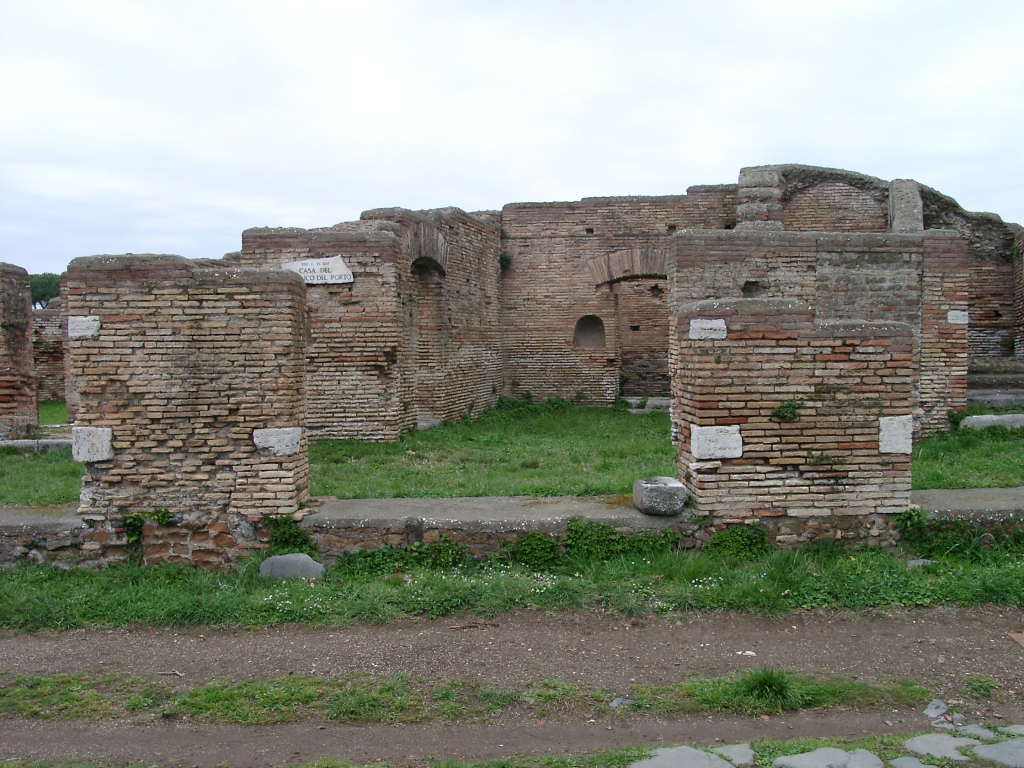
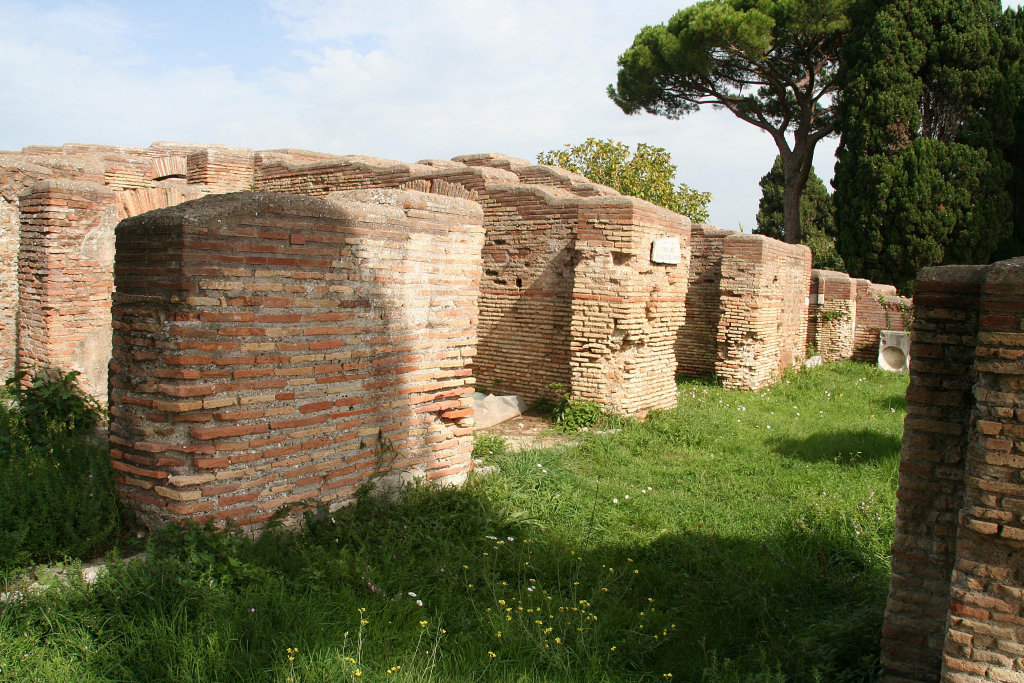
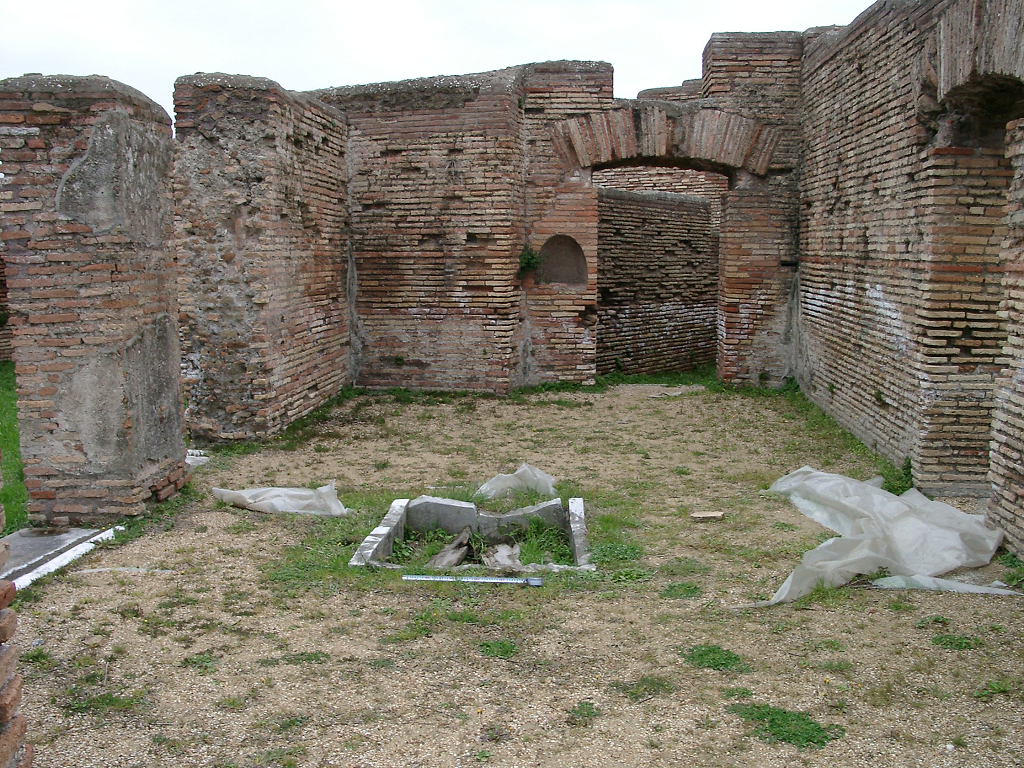
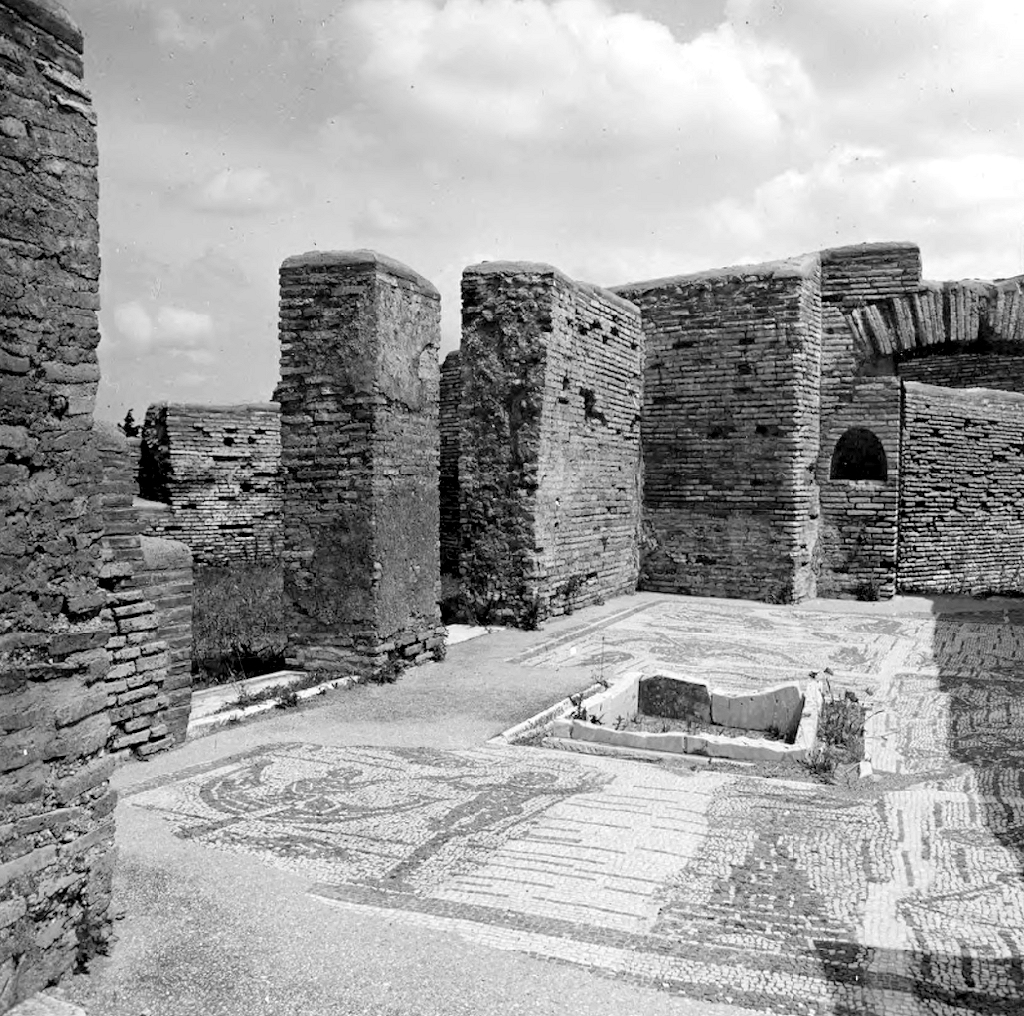
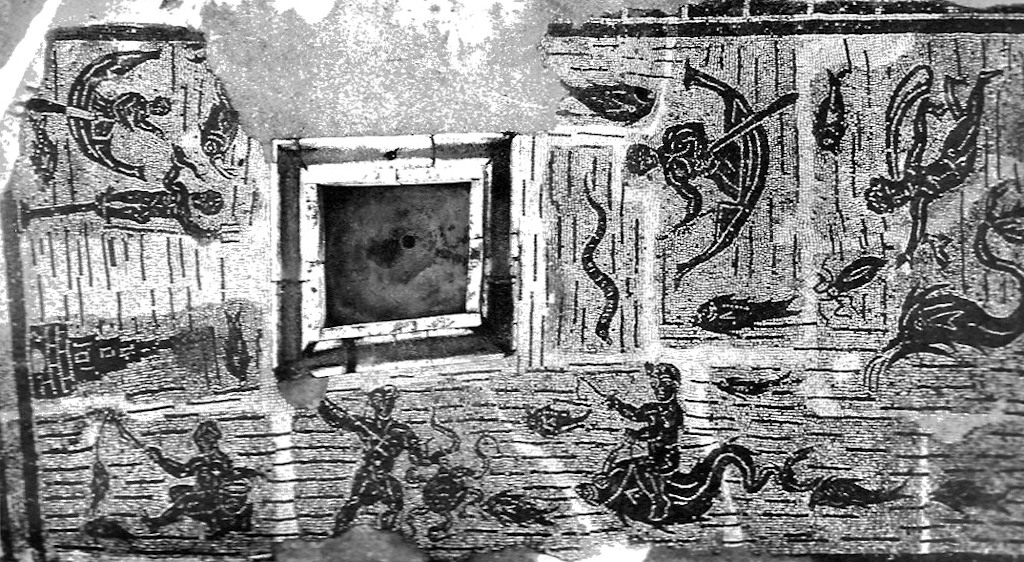
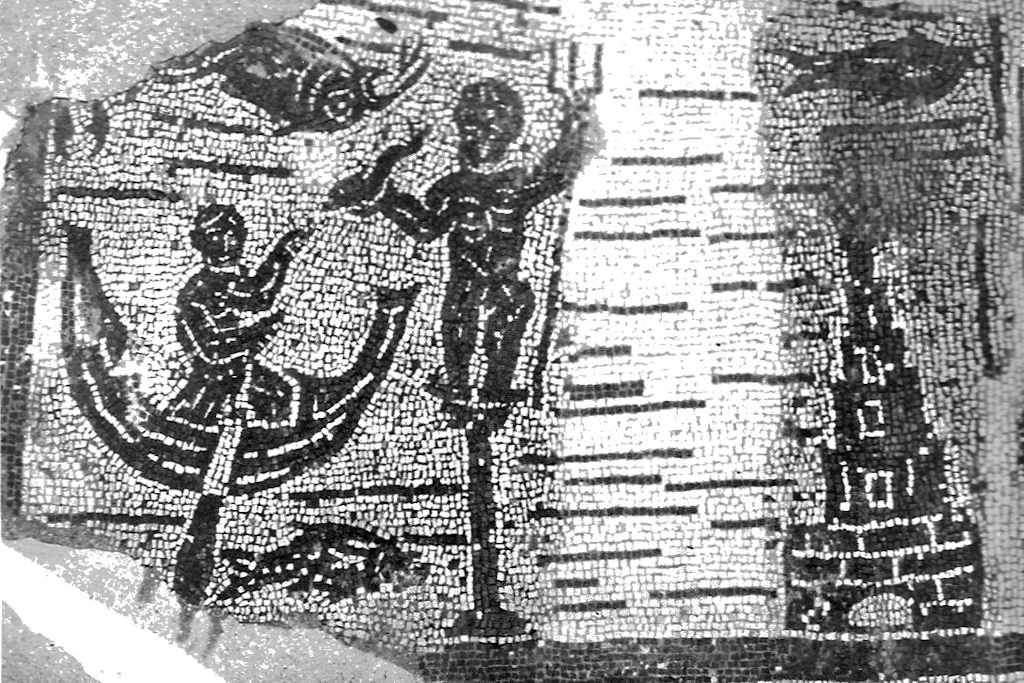
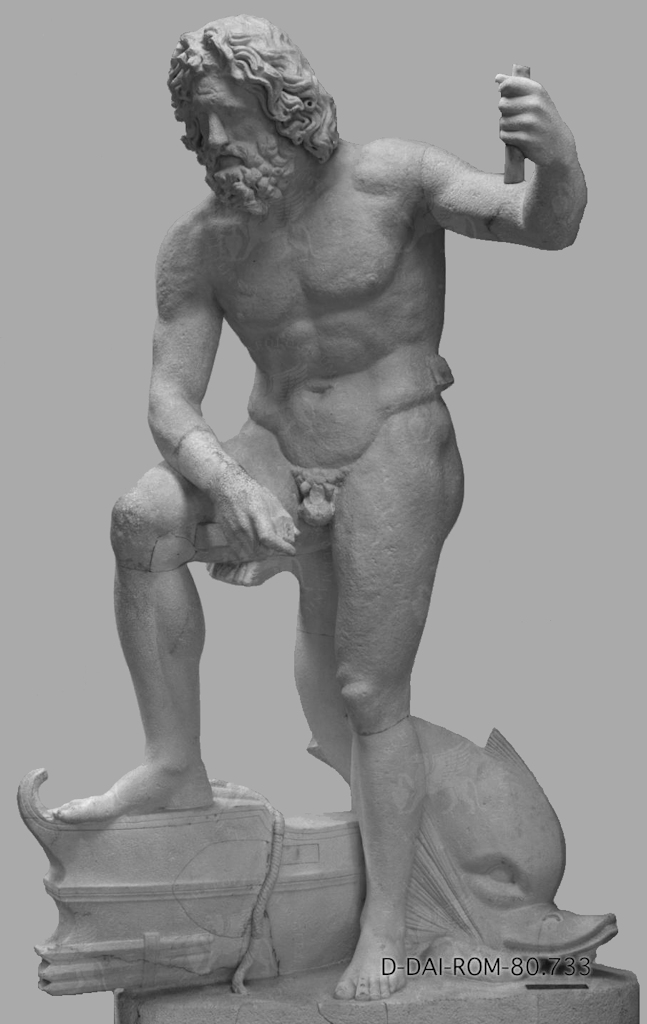 |
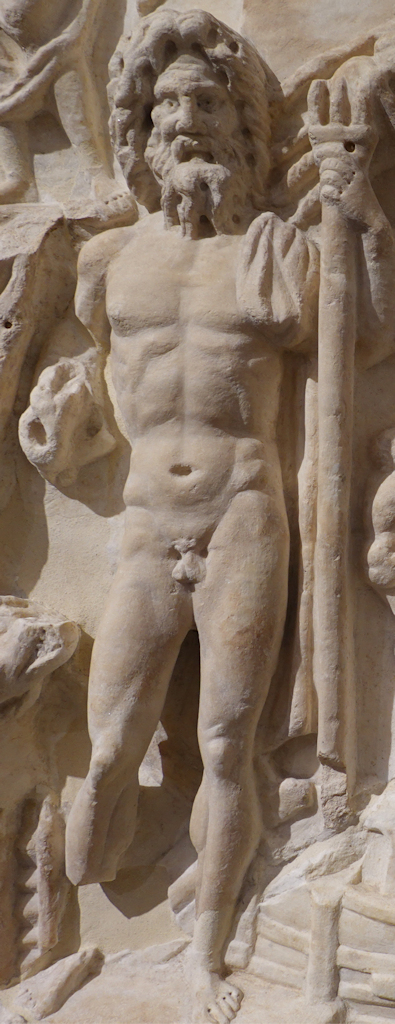 |
| Statue of Neptune found in Portus in 1824. Height 2.16 m. Second century AD. Vatican Museums, Museo Gregoriano Profano. Photo: Arachne. |
Statue of Neptune on the Torlonia relief. Photo: Annewies van den Hoek. |
